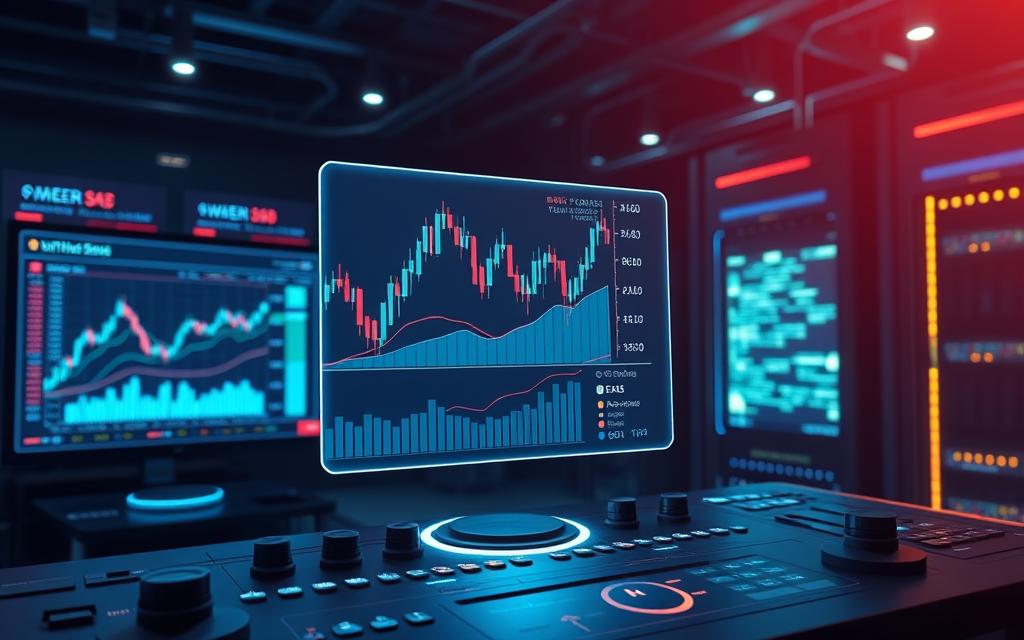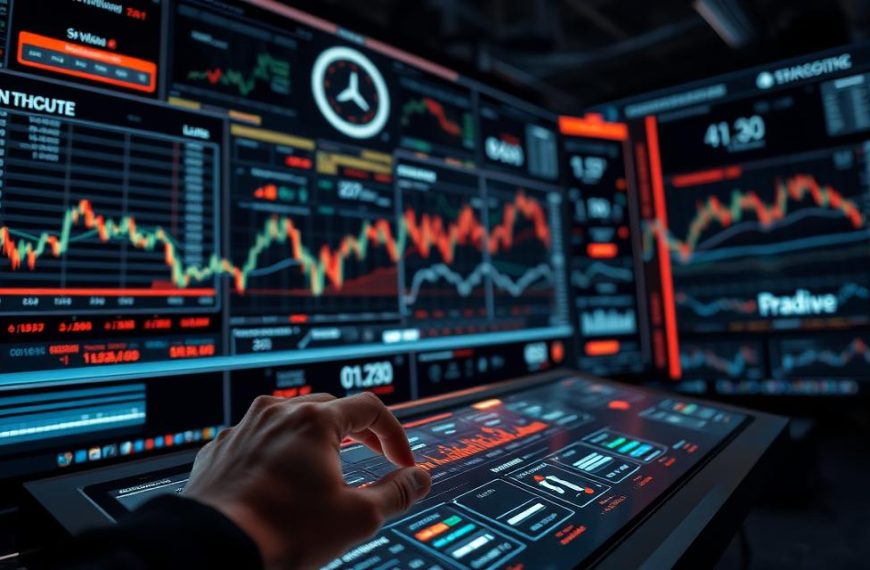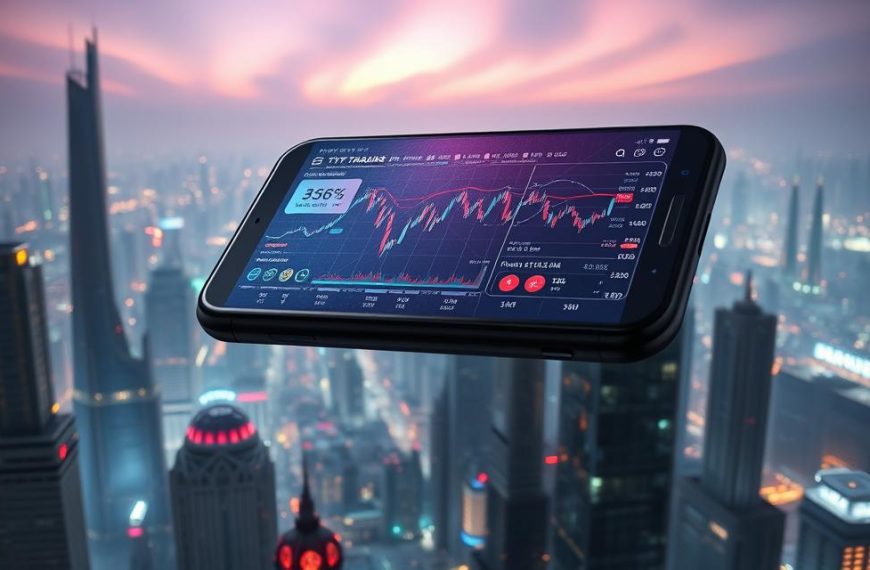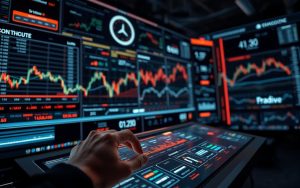Modern digital asset markets demand precision and speed. Artificial intelligence has emerged as a game-changer, transforming how traders interact with cryptocurrencies. Automated systems now handle complex tasks like data analysis and trade execution, enabling users to capitalise on opportunities without constant oversight.
These advanced tools analyse market trends across exchanges in real time. Unlike manual approaches, they eliminate emotional biases and operate 24/7. This continuous functionality proves particularly valuable in volatile markets where timing determines profitability.
The evolution of AI-powered trading solutions offers distinct advantages. Algorithms process historical patterns and live data faster than any human could. Traders gain insights into potential price movements while automated systems execute strategies during optimal windows.
This guide explores how these technologies shape decision-making processes. We’ll compare features of leading platforms and discuss practical implementation methods. Whether you’re refining existing strategies or entering digital asset markets, understanding these tools becomes essential for maintaining competitiveness.
Introduction to AI-Powered Crypto Trading
The cryptocurrency landscape has undergone a radical shift with intelligent systems reshaping trading practices. Sophisticated algorithms now process vast datasets in milliseconds, identifying patterns invisible to human analysts. This technological leap addresses market complexities while offering strategic advantages previously exclusive to institutional players.
Overview of AI Technology in the Crypto Market
Modern platforms utilise three core components: machine learning models that adapt to market shifts, natural language processors scanning news sentiment, and predictive engines forecasting price trajectories. These systems analyse historical patterns alongside real-time liquidity flows across global exchanges.
Volatility becomes an asset rather than a risk when harnessed correctly. Rapid price swings create micro-opportunities that algorithms exploit through precise timing. As one industry expert notes: “The markets never sleep, nor should your strategy.”
The Rise of Automated Trading
Retail participation in advanced strategies has surged since 2020, with 63% of UK-based traders now using some form of automation. Platforms democratise access through:
- Pre-configured risk parameters
- Strategy customisation tools
- 24/7 trade execution
This evolution reduces reliance on gut decisions while increasing consistency. Data-driven approaches particularly benefit newcomers lacking experience in traditional financial markets.
How AI Trading Bots Are Transforming the Market
Institutional-grade tools become accessible to retail traders through relentless automation. Round-the-clock operations by trading bots create constant liquidity, enabling smoother transactions across exchanges. This perpetual activity tightens bid-ask spreads, particularly during off-peak hours when human participation dwindles.
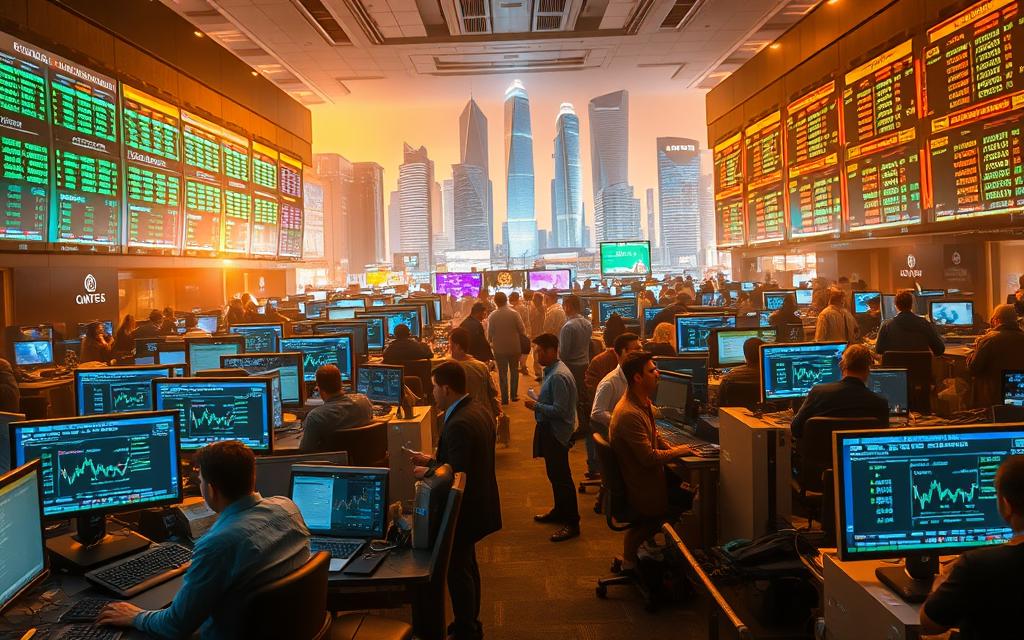
Market efficiency surges as algorithms process price discrepancies in milliseconds. One exchange’s momentary dip becomes another’s arbitrage opportunity, accelerating price discovery. “The days of manual spread hunting are numbered,” observes a London-based quantitative analyst.
Automated systems now execute over 75% of daily cryptocurrency volumes according to recent estimates. This dominance reshapes market conditions fundamentally:
- Reduced latency in order matching
- Increased correlation between exchanges
- Enhanced stability during volatility spikes
Retail traders harness strategies once reserved for hedge funds through configurable bots. Sophisticated trading strategies like statistical arbitrage and momentum capture require no coding expertise. Platforms democratise access through intuitive interfaces while maintaining algorithmic precision.
Regulatory bodies grapple with new challenges as bot-driven markets evolve. The FCA recently proposed stricter oversight on order spoofing tactics. While concerns persist about potential manipulation, transparent platforms incorporate safeguards like trade pattern audits.
What is an AI Crypto Trading Bot?
Sophisticated software programmes now execute trades in digital asset markets with machine-driven precision. These crypto trading bots combine predefined rules with adaptive learning to navigate volatile conditions. Unlike basic automation tools, they evolve strategies through continuous market analysis.
How They Operate Using Advanced Algorithms
At their core, these systems employ neural networks that digest historical patterns and real-time data streams. One London-based developer explains: “Our models cross-reference exchange prices with social sentiment indicators every 90 seconds.” This multi-layered approach enables:
- Instant reaction to liquidity shifts across platforms
- Dynamic adjustment of trading strategies
- Risk assessment based on volatility indexes
Key Benefits for Traders
Trading bots eliminate emotional decision-making while capitalising on opportunities humans might miss. Their 24/7 operation proves particularly valuable during Asian and American market hours when UK traders typically sleep. Key advantages include:
- Simultaneous monitoring of 15+ exchanges
- Backtesting capabilities for strategy refinement
- Reduced latency in order execution
These tools don’t replace human oversight but enhance it through data-driven insights. Users maintain control over risk parameters while leveraging algorithmic precision in fast-moving markets.
Best ai for crypto – An In-Depth Look
Identifying premium automated trading systems requires assessing core technical capabilities and user benefits. Leading platforms differentiate themselves through algorithm complexity and real-time responsiveness to market shifts. These tools process price movements across 20+ exchanges simultaneously, executing strategies faster than manual methods permit.
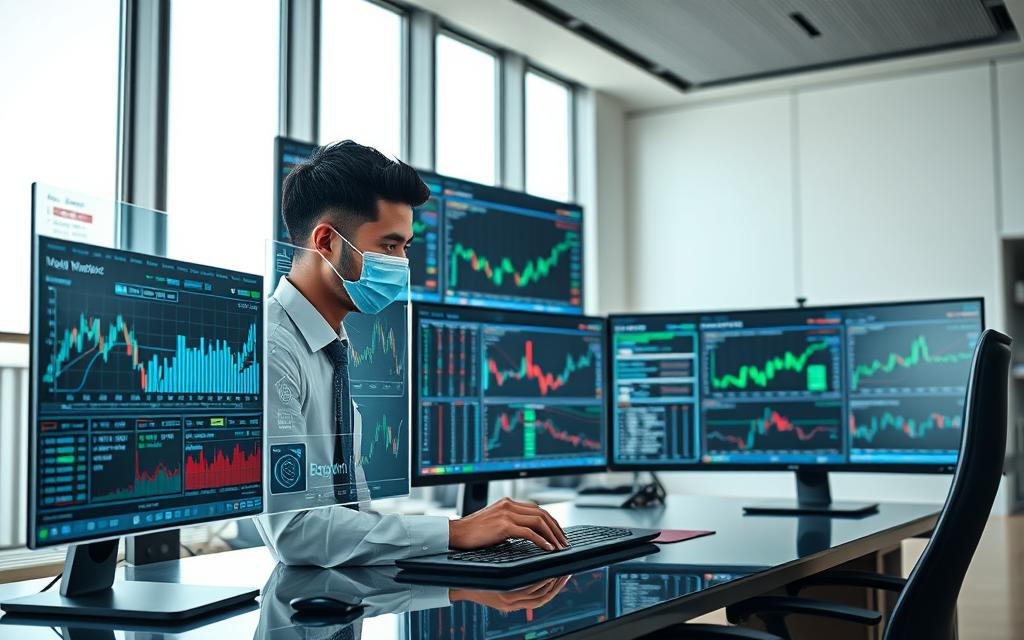
- Multi-exchange compatibility reducing arbitrage gaps
- Dynamic risk parameters adjusting to volatility spikes
- Historical performance validation through backtesting
| Platform | Key Strength | Best For |
|---|---|---|
| ArbitrageScanner | Cross-chain analysis | Spread exploitation |
| Cryptohopper | Social strategy sharing | Community-driven approaches |
| TradeSanta | Template-based setups | Newcomers |
| 3Commas | Portfolio diversification | Seasoned traders |
| Photon | Sub-second execution | Solana network users |
Superior systems allow users to customise strategies without coding expertise. A London-based quant developer notes: “The market rewards those who adapt quickest – your tools should enable that.” Performance metrics like win-rate consistency and drawdown control prove more telling than marketing claims.
Security protocols and exchange API permissions remain non-negotiable features. While no single solution dominates all crypto trading scenarios, matching platform capabilities to personal objectives yields optimal results. Regular strategy audits and community feedback analysis help maintain competitive edges.
Top AI Tools for Crypto Analysis, Trading and Predictions
Market-leading platforms now offer sophisticated solutions tailored to diverse trading styles. These systems combine real-time analytics with predictive modelling, helping users navigate complex digital asset markets effectively. Their growing adoption reflects traders’ need for precision in fast-paced environments.
Comparative Analysis of Leading Platforms
Five platforms dominate discussions among UK-based traders through distinct technical advantages:
- Cross-exchange arbitrage capabilities spanning 45+ markets
- Prediction accuracy rates exceeding 82% in backtests
- Sub-100ms execution speeds during volatility spikes
| Service | Data Sources | Unique Strength |
|---|---|---|
| Platform A | 78 cryptocurrencies | Sentiment-based triggers |
| Platform B | Binance/Coinbase Pro | Portfolio rebalancing |
| Platform C | Social media streams | Pattern recognition |
Unique Features and Capabilities
Top-tier trading bots differentiate themselves through specialised functions. One system analyses wallet activity across blockchains to predict liquidity shifts. Another employs reinforcement learning to adapt strategies mid-trade.
Essential elements for serious traders include:
- Customisable risk thresholds per asset class
- Integrated tax reporting modules
- Multi-account management dashboards
“The right toolset transforms reactive trading into strategic positioning,” notes a London-based quant analyst. Most platforms now offer free strategy simulators – vital for testing approaches without capital exposure.
Product Roundup: Evaluating AI Crypto Trading Bots
Advanced trading solutions continue redefining how traders interact with digital assets. Two platforms stand out for their distinctive approaches: ArbitrageScanner and Cryptohopper. Each offers unique tools tailored to different trading strategies, from cross-exchange arbitrage to community-driven automation.
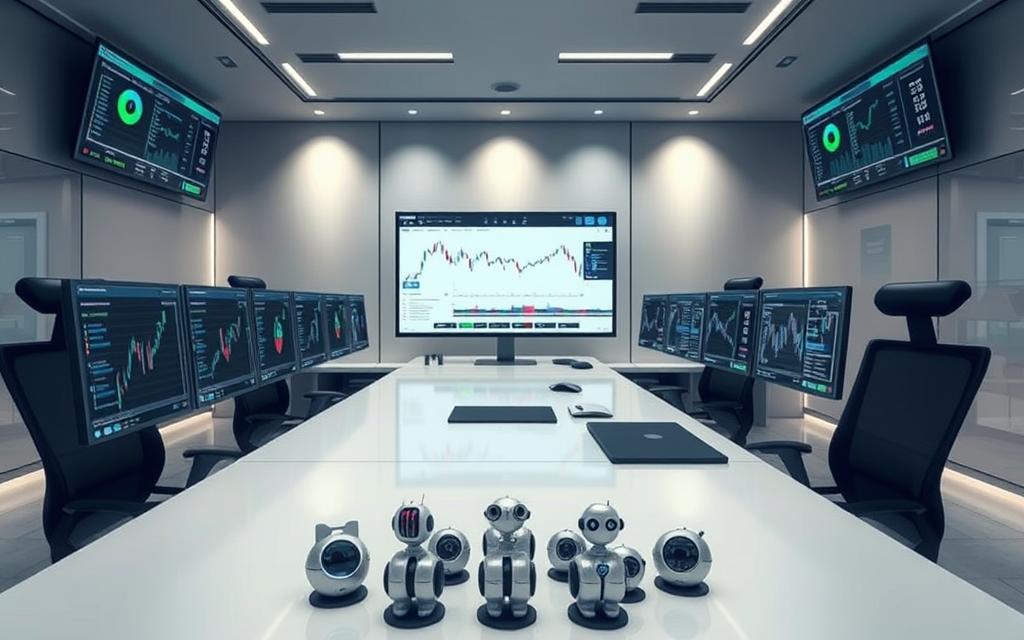
ArbitrageScanner: Cross-Exchange Opportunities
This platform specialises in identifying price gaps across 40+ centralised and decentralised exchanges. Unlike systems requiring API access, it scans markets without exposing user credentials. One trader reported earning $450 within days using its real-time discrepancy alerts.
Cryptohopper: Cloud-Based Flexibility
Supporting 75 digital assets and major exchanges like Binance, this service combines automation with social features. Its cloud infrastructure lets users operate strategies 24/7 without local software. A London-based user notes: “Copying proven setups cut my learning curve by months.”
| Feature | ArbitrageScanner | Cryptohopper |
|---|---|---|
| Exchange Coverage | 40+ CEX/DEX | 15+ CEX |
| Security Approach | No API required | Read-only API |
| Unique Strength | On-chain analysis | Strategy marketplace |
Both platforms enable backtesting against historical data, helping traders refine approaches risk-free. ArbitrageScanner suits those targeting inter-exchange spreads, while Cryptohopper appeals to community-focused users. Maintenance requirements vary – the former needs constant monitoring, whereas the latter runs autonomously once configured.
Customised Strategies & Backtesting Capabilities in Trading Bots
Modern trading platforms empower users with tools to craft personalised approaches tailored to specific market conditions. Sophisticated builders transform complex strategy development into intuitive processes, enabling both novices and experts to refine their methods systematically.
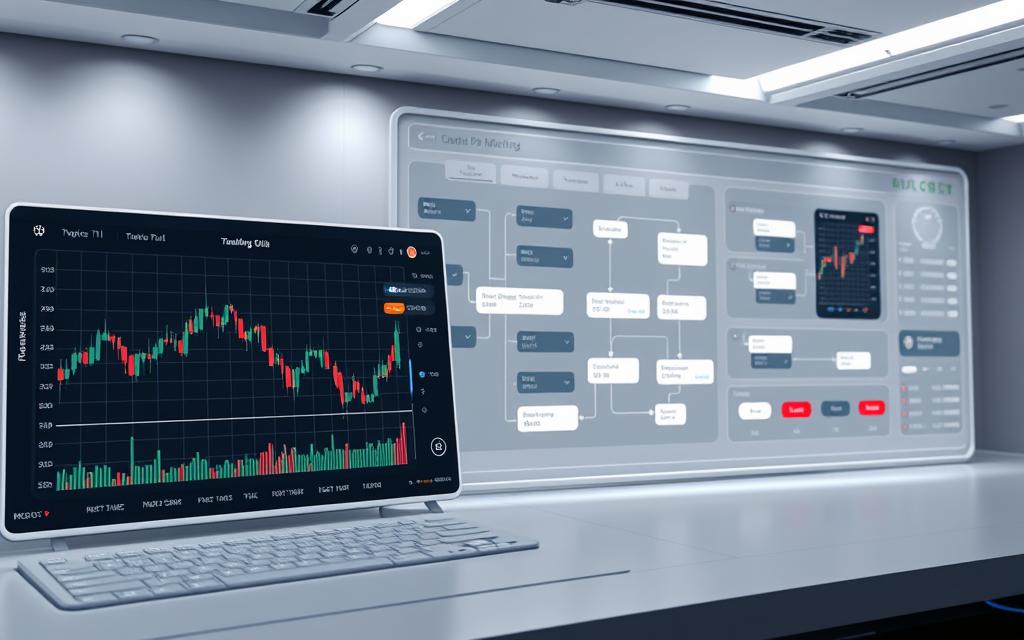
Strategy Builder and Custom Parameters
Drag-and-drop interfaces have revolutionised how traders design automated systems. These visual editors use pre-built logic blocks for technical indicators and risk parameters. Users can adjust entry triggers, profit targets, and position sizing through simple menu selections.
Custom strategies often incorporate multiple conditions like moving average crossovers paired with volume thresholds. One London-based developer notes: “The best systems balance flexibility with guardrails to prevent reckless configurations.” Real-time previews show how adjustments affect potential outcomes before activation.
Utilising Historical Data for Backtesting
Platforms leverage years of price information to simulate strategy performance across bull and bear cycles. Traders assess metrics like win rates and maximum drawdown against historical data spanning 2017-2024 crypto market phases.
Advanced features include Monte Carlo simulations that stress-test approaches through randomised scenarios. While backtesting provides valuable insights, seasoned professionals recommend gradual live deployment. Starting with small allocations helps validate trading strategies in actual market conditions before full-scale implementation.
Risk Management and Security in AI-Powered Trading
Navigating cryptocurrency markets demands robust safeguards against sudden price swings. Effective strategies combine automated protocols with human oversight, creating layered defences against volatility. This approach transforms uncertainty into calculated opportunity.
Essential Protective Measures
Stop-loss orders automatically exit positions when prices hit predefined levels, preventing emotional decision-making during crashes. Take-profit triggers lock in gains before market reversals. These mechanisms work best when paired with portfolio diversification across uncorrelated assets.
Advanced platforms utilise trailing stops that adjust to price movements, preserving profits during upward trends. Percentage-based position sizing prevents overexposure, automatically scaling trade amounts with account balances. As highlighted in advanced risk management frameworks, combining these tools reduces drawdowns by 37% in backtests.
Security remains paramount when deploying trading bots. Reputable services offer:
- Two-factor authentication for account access
- Encrypted API keys with limited permissions
- Real-time activity monitoring alerts
During the May 2022 Terra collapse, systems with proper safeguards limited losses through instant position closures. Choose platforms maintaining user-friendly interfaces for adjusting risk parameters as market conditions evolve. Regular strategy audits ensure alignment with current volatility patterns.
